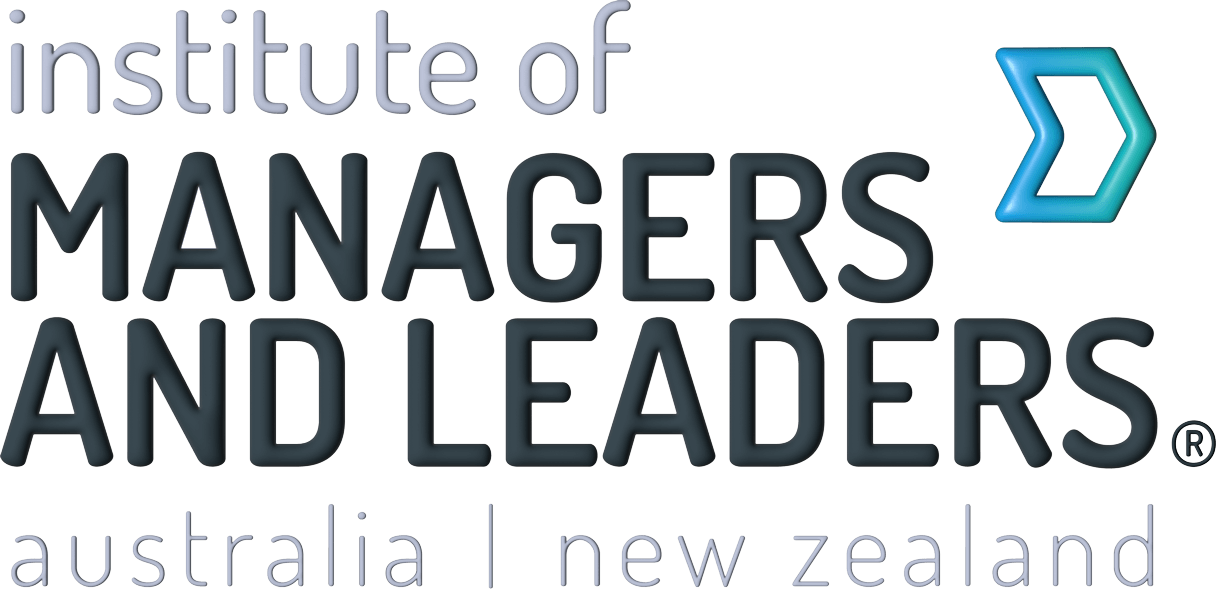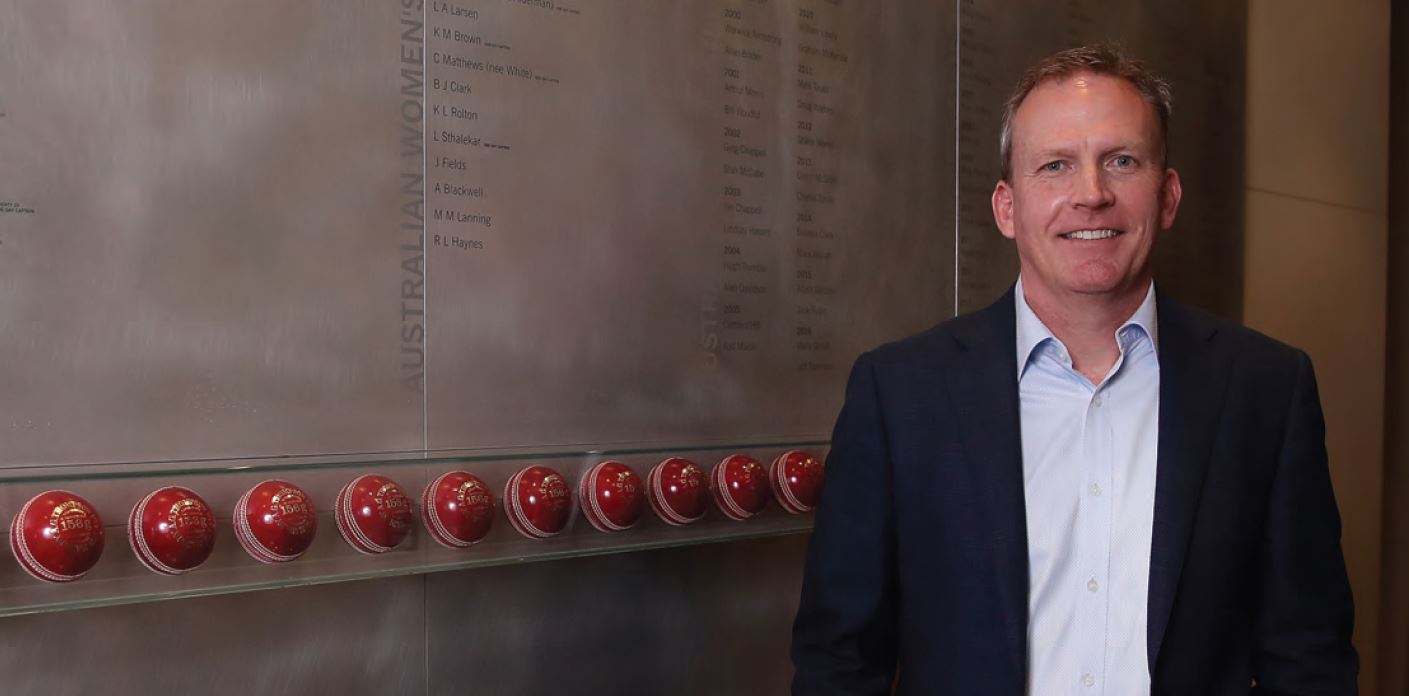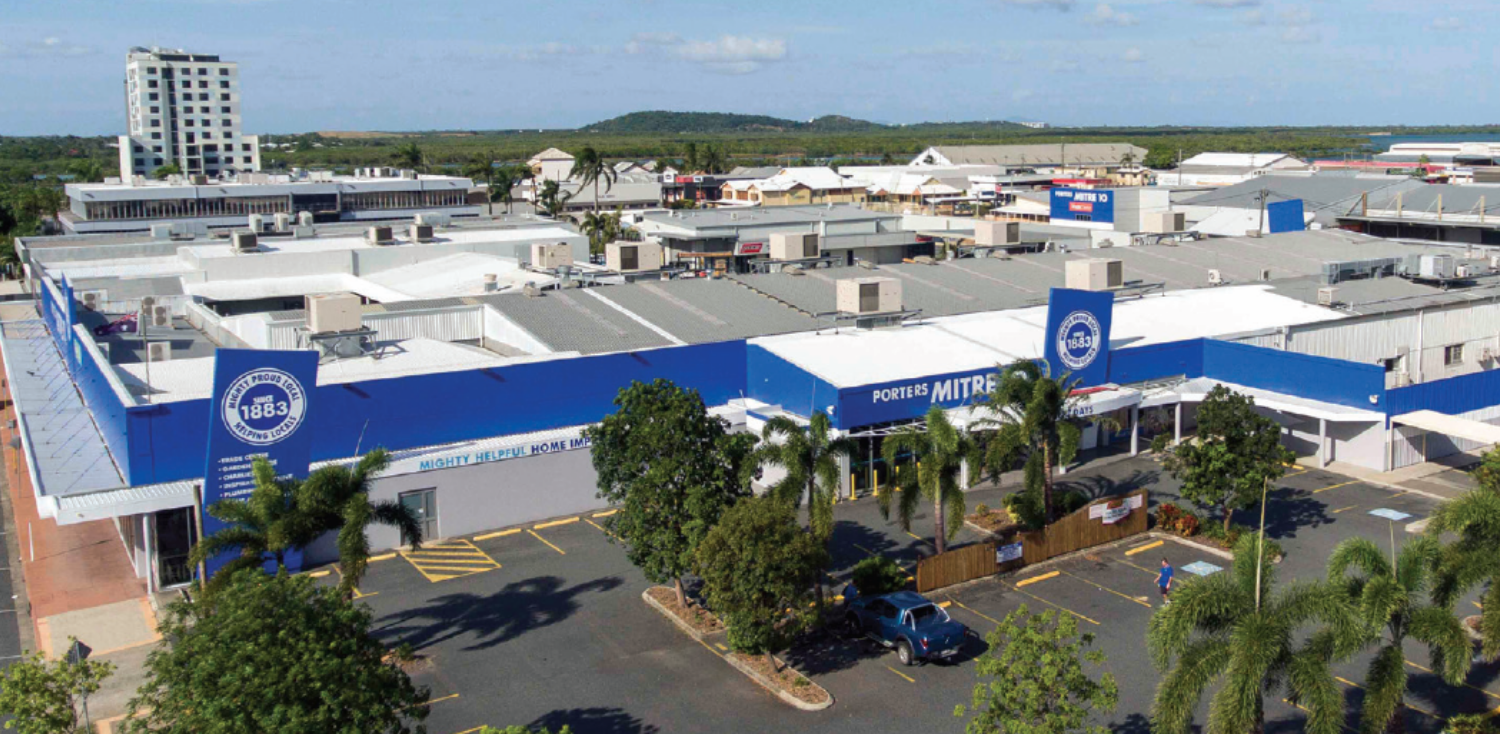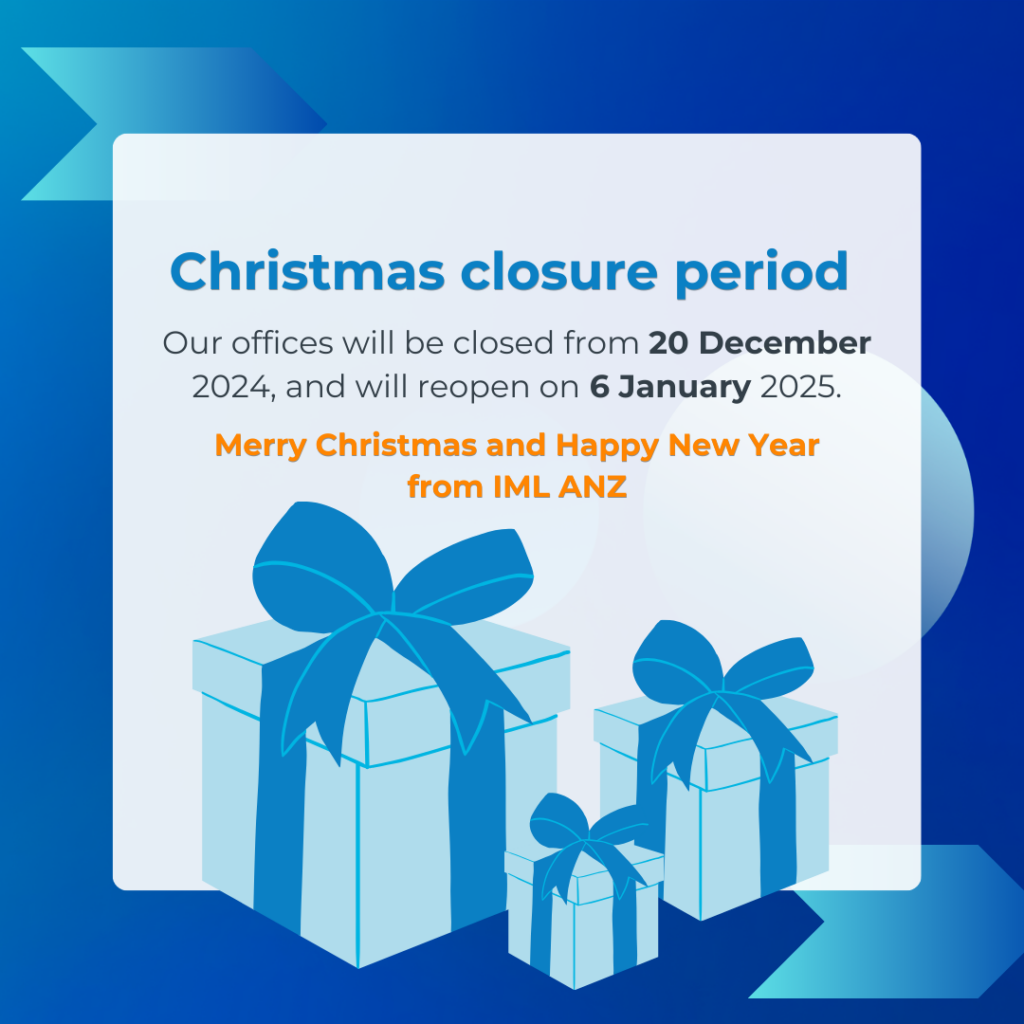Booktopia’s Tracey Mills handpicks six books to help lead people through technology disruption.
Continue readingWe are here for you
By David Pich CMgr FIML
IML ANZ Chief Executive
The global spread of COVID-19 has presented us with unprecedented challenges too numerous to list. The Institute recognises that this is an incredibly tough time for businesses, for managers and leaders and for employees around Australia and New Zealand as we all attempt to navigate the evolving impacts of the pandemic.
On behalf of IML ANZ, I want your Institute to offer you as much support as possible during this on-going crisis. It is during times like these that professional associations must step up and support their Members, many of whom have been loyal to us for many years. We want to ensure that our Members feel part of the ‘IML Tribe’ for however long the current social distancing, working from home and isolation measures persist. Last week I wrote about the fact that this is the time for managers and leaders to shine, but it’s also time for your Institute to shine. And shine we will.
It’s time for action from your Institute. It’s time for IML to be there for you.
Stepping up
On 13th March, I asked all IML staff to leave their offices and work from home. We were one of the very first businesses around Australia to do this. This decision was taken to protect the health of our staff and our Members. At the same time, we immediately instigated a detailed plan to convert almost our entire business to a virtual model. This plan – and the speed that we have managed to implement it – means that the Institute is now ready to step up and step in to assist our Membership through this period of adversity. Perhaps more than at any time in IML’s long and illustrious history, your leadership matters. So, your Institute is ready with additional resources and services to support you and your business.
Here are just three of the offerings we have created for you as part of the IML Tribe:
- Additional mentoring services with IML Member Exchange.
In times of unprecedented change, it is essential to be supported by other professionals who can provide objective perspectives and guide you through upcoming challenges. Mentoring is key to intentional leadership and no more so than right now. As such, we’ve launched an additional four-month complimentary mentoring cohort starting in May to support managers and leaders in need of advice from other members of the community in this difficult period.
- Resources to stay informed and equipped – Webinars and more!
With the crisis changing the way we work and lead globally, it’s important to stay up-to-date and abreast of new approaches to leading through the unfolding situation. Our experts have developed a series of on-demand Webinars and articles that are focused on equipping you to combat upcoming challenges. All of our Webinars are free to IML ANZ Members.
- Virtual Masterclasses on leadership, change, remote working and much more.
With circumstances changing daily, leading people and businesses during the pandemic requires new and specific change management skillsets. In the absence of classroom learning, we’ve created a series of unique, informative and virtual Masterclasses that prepare you and your staff with the necessary professional skills to lead effectively through uncertain times.
Stay connected
In addition, we understand that working in relative isolation is challenging. We know this because we’re all doing it! We want you to know that, as an IML ANZ Member, you might be working from home, but you are not alone. In times of crisis, our community grows stronger and more resilient when united. The Institute continues to foster spaces for you to connect with like-minded managers and leaders across Australia and New Zealand. Here’s where you can ‘meet’ and connect:
- Virtual Member Connects
Whether you’re talking about your leadership experiences during the pandemic, or you’re seeking advice from others, staying connected to your professional network can be an avenue of support, not only for you but for others in similar circumstances.
- Online community
We want to keep you updated and informed on the latest information and advice for professionals and businesses. One way that we’ll do that is through our social media channels. If you don’t already, please follow us in your preferred social media channel.




- Helping hands
I urge you to continue to keep in touch with us. Let us know what you need, and we’ll find a solution that will suit your circumstances.
Contact us via:- Email: membership@managersandleaders.com.au or membership@managersandleaders.co.nz
- Phone: 1300 661 061 (Australia) or 0508 465 2639 (New Zealand)
Finally, despite the difficulty of the current situation, I hope you will find confidence in the fact that the IML ANZ community is a resilient one. As one of the oldest and most respected leadership Institutes in the world, we have been connecting managers and leaders with each other for almost 80-years. Over that time, we have always been united by our shared passion for sound management and leadership practice in our teams, organisations and communities. This passion remains. As your Institute, we are determined to support you as a Member – and as a manager and leader – through this extraordinary time.
Rest assured, your Institute is here for you.
How Cricket Australia bounced back from defeat
By Anthony O’Brien
For many sports fans and members of the media, 24 March 2018 is a day that will forever live in infamy for Australian cricket.
To recap, Australia was playing a crucial test in Cape Town, South Africa, and the locals were on top. To try and stem the flow of runs, David Warner and Cameron Bancroft hatched a plan to use sandpaper on the red ball to help it swing. Simply put, a swinging cricket ball is harder to hit or can increase the chances of getting unwary batsmen out. The bottom line, whether you take sandpaper, dirt, or Brylcreem to a ball, is that it’s a form of cheating. In other words, it’s just not cricket.
After a couple of false starts, the game’s peak body Cricket Australia (CA) accepted the behaviour of Warner, Bancroft, and skipper Steve Smith, who appeared to condone the ball-tampering by his inaction, was unacceptable. The trio were given lengthy suspensions. Cricket Australia Chairman, David Peever said at the time, “The CA Board understands and shares the anger of fans and the broader Australian community about these events.”
CA CEO and former professional cricketer, Kevin Roberts, admits the national game found itself in this parlous predicament because, “cricket’s part of the fabric of our culture”. Roberts took over as the boss of Australian cricket in October 2018.
To provide some perspective about how important the red ball game is for Australians, Roberts compares the national cricket team, which is famous for its Baggy Green cricket cap, to the mighty All Blacks of New Zealand. “From a cultural perspective, cricket is a national sport just as rugby is New Zealand’s national sport.”
Before working in cricket full time, Roberts had about 20 years in sports sponsorship working with the likes of Adidas and Kiwi sportswear giant Canterbury. He continues, “When people see an example of the spirit of cricket not necessarily being demonstrated in the national sport that’s part of our nation’s culture, it becomes a big issue.”
The long and challenging journey that CA has travelled in the past two years offers a fascinating case study in organisational culture for leaders in all industries.
CRICKET AUSTRALIA’S RESPONSE TO CAPE TOWN
In April 2018, CA commissioned the Ethics Centre to conduct an independent review into cultural, organisational and governance issues in cricket following the Cape Town ball-tampering scandal. The evaluation aimed to establish a charter setting out standards for improved player behaviour and expectations of the Australian men’s national side.
The review featured a panel of past and present players including national test captains Tim Paine and Rachael Haynes, who was deputising for the legendary Meg Lanning. Others on the panel included former internationals Shane Watson and George Bailey, the world’s best fast bowler Pat Cummins and men’s team coach, Justin Langer. Also an Ethics Centre survey garnered responses from 450 CA executives and employees, current and former players, state and territory association staff, and representatives from sponsor and media organisations.
Running parallel to this process was an examination of team conduct contributing to the events in South Africa. There has been a perception among some sections of the community that the Baggy Greens were arrogant. However, the bubble created by regular test and cup wins tended to paper over the cracks.
Despite the community cynicism, CA has responded decisively to the Cape Town fiasco, which is a credit to the leadership of Roberts, who joined the CA Board in 2012 before switching to executive roles from 2015. Unenviably, Roberts was in the CEO’s chair when the Ethics Centre released its 145-page report outlining 42 recommendations for CA’s consideration. Roberts recalled, “By the time I came into the CEO role, it was time to release the findings, and more importantly to get cracking on its implementation.”
While there was a mixed response to the report’s release, what struck Roberts was, “how isolated incidents had affected people who were on the receiving end of it”. For instance, the report asserts, “We have (also) been told of groundsmen (who) have been required to prepare practice pitches – spending time and effort only to see an elite bowler send down only seven deliveries before reaching the mandated ‘quota’ – and therefore stopping.
“This kind of behaviour speaks of gross disrespect to those who are not natives of the ‘gilded bubble’.”
While that might be an isolated incident, Roberts determined to consider how people were affected, either positively or negatively, through their interactions with cricket. As a result, the new CEO and his team released a cultural change program focused across three categories – people, high performance, and leadership.
HARVARD CONTRIBUTES TO CRICKET LEADERSHIP
CA launched a leadership program in 2019, which is a tailored version of a world-leading program from Harvard University, explains Roberts. Around 40 executives, senior managers, Paine and limited-overs skipper Aaron Finch, as well as coaches took the program, and are now collaborating on developing CA’s leadership culture. “We’re on that journey together, which is fantastic,” Roberts said.
Additionally, CA established the Australian Cricket Leadership Team in late 2018. This group includes the CEOs of each of the state and territory cricket associations. “This team acknowledges that cricket operates through a federal structure as opposed to a corporate hierarchy, and it was about spreading the leadership through that broader cricket ecosystem.”
Since Cape Town there has been a significant turnover of CA’s executive team, including the notable resignation of long-term CEO James Sutherland. Former Hyundai executive Scott Grant joined the peak body as COO. Like Roberts, the new operations supremo is no cricket blowin, and moonlights as the president of Bankstown Cricket Club, where the famous Waugh twins played. Roberts, who also scored runs for Bankstown, said, “We’ve got Drew Ginn, the former member of the Oarsome Foursome [Olympic Games winning] rowing team. He’s working with the states and territories to develop the next generation of talent.” Also, Ben Oliver, who was working for the Western Australian Cricket Association, is now responsible for the national teams. “So, there’s been some development among our leaders themselves as well,” Roberts adds.
PITCHING THE MEDIA TENT
CA has put 100 managers through a cultural change program. “We’ve also identified the need to improve the nature of communication inside and outside the organisation,” Roberts said. This project includes establishing a new internal communications platform aimed at creating closer links throughout the organisation. CA has also implemented new forums for all staff to ask questions or raise issues directly with management, in a safe environment.
Additionally, Roberts and his team have improved communication with relevant stakeholders, such as the media. To this end, CA has increased media training for its leadership and players. “We are making an extra effort to bring the media into the tent and to be open with them,” said Roberts. “The cricket media are great storytellers in the game, and so we must embrace their role.”
HIGH PERFORMANCE: THE PLAYERS ARE DOING THEIR BIT
Under the affable men’s test captain Paine and the approachable limited-overs men’s skipper Finch, Australian cricket teams have made decent strides in reconnecting with the public. Paine for example, has introduced a pre-game handshake between the Australians and their opponents, which seems to have gone down well with the cricketing community. “The men worked together with the Australian women’s team on a players pact. Put simply, they aspired to make Australians proud in everything that they do as players,” explained Roberts. “We worked with the players to define what we stand for and agreed our goal will always be to win because it’s a professional sport.
 “But our non-negotiable expectation is to compete with respect. It’s not just about winning – it’s also about how we go about it.” That said, the test team’s magnificent retention of the Ashes for the first time in England since 2001 is a significant fillip for the game in Australia. Particularly given it followed just a few weeks after the Australian women’s team secured an outstanding Ashes series win on English soil too.
“But our non-negotiable expectation is to compete with respect. It’s not just about winning – it’s also about how we go about it.” That said, the test team’s magnificent retention of the Ashes for the first time in England since 2001 is a significant fillip for the game in Australia. Particularly given it followed just a few weeks after the Australian women’s team secured an outstanding Ashes series win on English soil too.
The proof is in the pudding for the image of Australian cricket, with the men’s cricket team not earning a single code of conduct charge in the 2018–19 season. This result was a first clean sheet in eight years for the prickly Baggy Greens, who have been notorious for aggressive sledging of their opponents. At the same time, Roberts points to the redemptive journey ‘best-since Bradman’ Steve Smith has undertaken since Cape Town. The former skipper visited many schools around Australia during his enforced absence from the Australian cricket team. “Steve Smith had a profound positive impact on several school children by having the courage to open up and talk about his experience as a leader during and beyond the Cape Town situation,” offered Roberts. “So that’s where the players are fantastic, in opening their hearts, telling their stories and I guess embracing the vulnerabilities. That’s what is connecting with the public.”
However, deep wounds will always take time to fully heal. A recent Roy Morgan poll indicated that the Australian public’s distrust in cricket is higher than any other sport. Although a level of distrust continues, there is some good news. Women’s cricket continues to provide a boost to the overall image of the sport with higher trust than distrust, according to Roy Morgan. Roberts comments, “We want cricket to be a sport for everyone, not a sport for some. That means embracing gender diversity, embracing cultural diversity and all other forms of diversity.” To celebrate diversity, CA is aiming to set a world record at the T-20 Women’s World Cup final on 8 March 2020 for attendance at a women’s sporting event. The final will be held at the mighty MCG, which seats around 100,000 and will take place during International Women’s Day.
ROBERTS THE BUSINESS SKIPPER
As a leader, the humble former NSW batsman Roberts says, “It’s more for others to have a view on my leadership style, but… I seek to be people-focused and to develop deep relationships with stakeholders.”
Roberts admits to presenting a straight bat when faced with difficult decisions. “I make the hard decisions required of a leader. While I try to do so in a way that shows respect for people, I must accept that people won’t always feel good about the decisions or the way I managed them. I’d like to think I demonstrate courage in leading from the front when we face issues so that our people can get on with making a difference.”
This article originally appeared in the December 2019 print edition of Leadership Matters, IML ANZ’s exclusive Member’s magazine. For editorial suggestions and enquiries, please contact karyl.estrella@managersandleaders.com.au.
Is nudge management the key to overcoming change resistance?
Business and change are inextricable. But just because it’s common doesn’t mean successful business change is easy. As humans, we naturally resist the new and novel. We will fight or flee from anything unfamiliar, especially if it presents a considerable shift from what we know. However, recent studies reveal that small, subtle suggestions are making huge impacts in changing behaviours.
Effective, optional suggestions
A technique often attributed to making easier, faster, and simpler choices, nudging isn’t new. We see examples of it every day. Your alarm is a nudge, so is the default renewal of subscriptions, even the ‘low fat’ labels on food are nudges.
The reason why nudges are effective relates to the fact that you are free to ‘follow’ the push or not. You have a choice. For example, GPS directions are a nudge, but how often do we stick to the exact route provided?
One of the most publicised examples of successful nudge management involves the reduction of fuel consumption by Virgin Atlantic pilots. In the aviation industry, pilots – particularly the captain – enjoy much autonomy when it comes to decisions that involve fuel and the flight. The experiment saw how nudges had an impact on the behaviour of captains. By simply informing the captains that their fuel consumption will be monitored and requesting them to report on their fuel performance, the airline saved $5.4 million in fuel.
Perhaps the experiment was highly effective since it avoided making fuel reduction a ‘mandatory’ requirement for pilots. Instead, it preserved the pilot’s sense of autonomy while making subtle suggestions about improving fuel consumption levels. The change didn’t seem out of their control.
Nudging the right way
So what about when it comes to managing change in the workplace? Can nudge management help? If we think about the top reasons for resisting change, nudge management does provide an ideal counter:
- Fear of losing control: As demonstrated with the Virgin Atlantic experiment, the liberty-preserving aspect of nudges could make them an effective way to start changing behaviour.
- Concerns about the unknown: The most effective nudges present a benefit upfront. You could suggest an action to simplify a process, help others make healthier choices or ensure their safety (as with speed limits, for example). No one enjoys coercion.
- Insecurity over reputation: In some change scenarios, people may feel that the shift is occurring because they failed and were ineffective. One type of nudge – the use of social norms – can address this. By confirming that the majority of colleagues feel positive about change (or want to see change occur), that lifts the pressure on the people who may feel personally responsible.
While nudge management is a great tactic to use when implementing change, it’s prudent to remember that it is just one of many. Plus, the most successful examples of using nudges to influence change have involved ‘behavioural change’. Structural changes, for instance, may not be as adequately covered by nudge management.
Change is complex. Resistance is only one of the many challenges that accompany any shift from the norm. Every organisation, team and individual will face unique hurdles in their transformation journey. Great leaders will analyse the specific needs of their team or organisation and consider whether nudge management is a tool they can use.
Building trust in an age of disruption
By Dr Mathew Donald
The age of disruption may be characterised as an environment that is fast-paced, uncertain and risky. This new environment emerged from globalisation, aided by technology and trade interconnectivity, whilst facilitated by social media and the internet. A simple presidential tweet, or small change in a trade war is now transmitted instantly around the world, without necessarily any verification, analysis or investigation. This unfiltered and immediate nature of information may contribute to instability and confusion for staff and stakeholders. Leaders may not be able to control the external environment, yet through explanation, influence and engagement, leaders may be able to effectively reduce the stress and worry that results from disruption.
The interplay of trust and successful change
Leadership is influence. It can generate a willingness or inspiration to follow. Staff do not automatically listen and follow leaders irrespective of the environment, as they need trust as a precursor. If there is low trust in leaders, their messages may not be heard nor believed. It has long been recognised that trust is an element of leadership. Recent research now indicates that trust is also closely related to organisational change success. In a future disruption environment, change is likely to be constant and the need for trust is heightened, so future leaders will likely require excellent skills in communicating, explaining and involving staff in associated change.
Leaders set strategy, direction and plans to inform and influence their teams. The strategy and planning process is designed to signal a way forward, provide context and alignment across a whole array of staff and stakeholders. When new data and information emerge quickly, leaders could be under pressure to react to new advances, new information or developments. The risks in this scenario is where there is a high prospect of leaders regularly reversing and overriding past decisions. Reacting quickly may be just as risky as delaying decisions in disruption and the competition may react before accurate information or analysis emerges.
How disruption erodes trust
The changing nature of disruption creates new challenges as leaders will continue to attempt to build trust by delivering on past promises despite the change around them. Organisations will find it impossible to move forward if the leader is not able to ensure that they are believable and worth following. Imagine if a leader offers a pay rise, only to later discover that their cost of inputs has been altered significantly by a new tariff. Imagine a leader who announced a new acquisition but soon discovers that a new technology has completely eliminated the business value. Sudden change that alters decisions are part of a disruptive world. So leaders of the future will need to explain changes, risk and uncertainty with their teams in order to prepare for disruption.
Leaders must be ready to respond
In an uncertain environment, leaders will need to explain the fast pace, the uncertainty and risk regularly. Failure to do this adequately will likely lead to staff confusion, or blame toward the leader for not controlling the situation. Staff will appreciate regular and open communication on disruption, even when they do not like the described environment. Communication is such an important part of leadership, a factor that is likely to be more important with constant change, so the new leader will need to be cognisant of various communication forms, language styles, formats and regularity. Leadership communication may even be so regular that staff may be included as partners or advisors, rather than merely as subordinates. Leaders will require efficient, effective and regular communication in order to build trust, those unable or unwilling to operate this way may fail to move an organisation forward with the speed required. The leader of the future will likely be comfortable in explaining the new environment and changes, whilst building teams that are resilient to multiple options and decisions despite any ongoing risk or uncertainty.
Dr Mathew Donald specialises in leadership, management and organisational change and has more than 35 years of business experience. He is the principal of Dr Mat – The organisational Health Doctor ™, available globally for consulting, mentoring and presentations. He is also the author of “Leading and managing change in the age of disruption and artificial intelligence” (Emerald $USD 100.00).
Effective change starts with failure
By Richard Shrapnel FIML
Because no one likes to fail, we’ve created many ‘feel-good’ sayings about it. However, most of us take these so-called clichés with a grain of salt. But in business, leaders must pay attention to their attitude toward failure – it could hold the key to success.
So, how does your business consider failure?
Non-compliance is not failure
Let’s define failure at the outset. Failure has nothing to do with non-compliance. And by non-compliance, I mean not upholding business values, policies, procedures – the set ways which everyone knows the business requires one to act. That’s not failure. That’s breaking the rules; and appropriate sanctions should be applied and enforced. Non-compliance is an issue of discipline, and all business must uphold discipline.
Failure is trying something new, untested, experimenting, stretching the business’s capability to a new level but not reaching the ‘hoped-for’ outcome.
I draw this distinction as many businesses around the world get caught up in not meeting appropriate standards, whether they be internal to the business or external through regulation and even customer expectations. These outcomes are often described as failures, where they are better-considered non-compliance.
Failure should be encouraged whereas, non-compliance should not be tolerated.
Failing forward
Success and profitability rely on a business’s ability to outcompete all others in its chosen marketplace. And that means being able to deliver greater value to customers than your competitors today and importantly tomorrow.
Stepping out, evolving, reinventing and creating are some of the descriptors I would use to flag the type of behaviours that a business must immerse itself in to be competitive. If a business simply continues with what worked in the past, then there will become a time when their customers’ needs and their competitors’ capabilities have all moved on, and they are left behind.
This ability to continually evolve requires the practice of trying, failing, retrying and continuing to learn from each step taken. Then incorporate those learnings into the value that you deliver to your customers.
Barriers to failing
There are many barriers that exist within a business that will prevent it from failing and taking those learnings forward, but they can all be traced back to the business’s attitude to failure.
In many businesses, failure is spelt ‘your fault’, and it is often swept under the carpet or passed around when it occurs. Such an attitude is anti-change and counter-growth. Everyone wants to be associated with the successful project, and no one had anything to do with the failure. Failure can be a source of fear – real fear – but should it be feared?
Material losses can be incurred by businesses where a fear of failure is prevalent. This fear seeds a blame culture leading to denial, no ownership, and a lack of oversight and accountability. Failures may well be hidden where fear is prevalent, and losses escalated rather than mitigated.
There can be no learnings where fear exists as no one will want to be associated with or recall the project nor its lessons.
So what attitude should a business seek to develop when it comes to failure. Well, there are, I believe, two aspects:
- We are an innovative and growing business, so experimentation is part of who we must be.
- Failures will occur and will be acknowledged with humility, acceptance and learning.
Honestly, doesn’t something only become a failure if you abandon all the learnings and hope for the future? The attitude you create and sustain in your business must uphold the right attitude towards failure. And do not allow failure to become a political tool within the business.
How leaders should handle failure
The way leaders act with respect to failure will set the role model for everyone else in the business to follow. Failure is a test of and testament to the character of leaders. How leaders handle their failures and those of fellow leaders and colleagues speaks volumes to their character and motive. You should listen carefully to what it says as it will identify the worthy leaders in your business.
Leaders will need to develop humility as a core character trait if they are to build a business that grows and can outcompete everyone else in their market. Humility is the character trait that allows you to listen and learn most effectively, and that is a trait you want in your business’s DNA.
The trait you do not want in your business is self-interest. Self-interest will undermine your individual and your business’s success. If you are always putting yourself first, then no one else will be uplifted, and that uplifting of others is essential for growth.
The right people, in the right places with the right attitude, is essential to the growth and enduring success of your business.
How your business views and approaches failure is a cornerstone to its ability to deliver greater value to your customers every day. Allow the wrong attitude to take hold, and your business will stagnate. Seed, feed and flourish the right attitude, and growth will never be an issue.
Richard Shrapnel is a business strategist, advisor and speaker. He is a Fellow of IML ANZ.
Using plastics to save the environment
By Nicola Field | Photo by Anna Rogers
FNQ Plastics is a custom fabrication specialist with an environmental focus and an end goal of reducing waste into landfills. Lesley Van Staveren is quick to point out that the products they sell are either made from recycled plastic or can themselves be recycled.
“We’re educating people that plastic is a good material if it’s used in the right way,” she says, noting that the HDPE tanks sold by the business can be recycled into surprisingly diverse products such as decking or privacy screens.
ECO-FRIENDLY OFFICE
As the 2017 Cairns Businesswoman of the Year, Van Staveren brings her eco-friendly approach to the workplace. “We don’t have any single-use products in the office,” she explains. Even employee bonuses are handed out in re-usable keep-cups and, not surprisingly, the entire FNQ Plastics team shares Van Staverens’ passion.
“We have a very strong team, with a pro-active culture where opinions are shared, and everyone gets involved,” she says.
BECOMING WASTE WISE
Living on the doorstep of Australia’s iconic Great Barrier Reef has played a role in Van Staveren’s commitment to recycling and waste reduction. “When people see the devastating impact of waste on this pristine environment, they want to have a voice,” she notes.
It’s this voice that Van Staveren is bringing to her community.
A little more than two years ago, she set up the Cairns Committee for Waste Reduction, galvanising locals to get involved. “I picked up the phone and contacted different interest groups, businesses, and people to gather a broad cross-section of ideas,” Van Staveren recalls.
A year later, the Committee is having a big impact at a grassroots level. “We provide workshops, help businesses become waste wise, and later this year we’ll host an awards ceremony to recognise waste wise enterprises.”
AN EQUAL PARTNERSHIP
With three children aged under five, Van Staveren admits she couldn’t manage her hectic schedule alone, and it’s the strong, equal partnership she shares with her husband that makes it all possible. But Van Staveren isn’t content to rest on her laurels.
The couple are hoping to open a plastics recycling plant. With an estimated cost of A$4 million it’s an ambitious project, however initial funding under the federal Regional Jobs Investment Package has allowed some early research to go ahead, and now it’s a case of watch this space.
A commitment to sustainability has allowed Van Staveren to build a strong team and a healthy business while also giving back to the community she loves. But what of those raised eyebrows when she mentions she owns a plastics business? “It’s certainly a conversation starter,” Van Staveren laughs. “But it also brings the human element back to the issue of recycling – and that’s a good thing.”
Resilient Porters seizes its opportunity
By Lachlan Colquhoun
If only he could know it, Charles Porter would be delighted that a sixth generation of his family is now working in the hardware stores which bear his name in Mackay.
Porter’s business was born of necessity and then opportunity. He arrived in the North Queensland town in the early 1880s to build a hotel and found there were virtually no building products available.
So he transported what he needed from Europe, Brisbane and Sydney by boat, and once the hotel was built he stayed behind and founded the Porter’s hardware supply business.
135 years later, Porters Hardware and Building Supplies is a fixture in Mackay but despite its longevity and strong local roots, it hasn’t always been easy for the business to thrive.
A BOOMING SECTOR
In fact, as Managing Director Gavan Porter (Senior) Corporate member of IML ANZ puts it, the business is only now coming out of a “perfect storm” of a volatile boom and bust cycle which severely tested its resilience.
“We’ve been through two World Wars, the Great Depression and credit squeezes, but the past four years we had a big contraction with the resource sector downturn. It was brutal,” says Gavan (Senior).
“Most of the contractions have historically been 12 to 18 months. This one went on for four years.”
However, back in the early 2000s Mackay was growing rapidly as a service centre for the resources industry. Multinational companies set up business in the city for the first time and the population increased sharply.
It created a building boom that was good news for the Porter business, where trade comprises 80% of turnover, including the company’s manufacturing divisions, which fabricate aluminium and glass products as well as roof trusses and wall frames.
The boom in Mackay also attracted the attention of bigger national hardware players. Woolworths’ failed Masters chain opened up a store, and market leader Bunnings added a second Mackay store in response.
Porters were also not the only independent operator. They had for decades been in competition with another Mackay family, the Woodmans, who had allied themselves with the Mitre 10 buying and marketing group and had a strong retail and trade presence.
“We went from one ‘big box’ store operated by Bunnings to three in total including Masters, and Woodmans had the advantage of being part of Mitre 10 with their resources,” says Gavan Porter (Junior) CMgr AFIML, who is the company’s CFO.
“There might have been room for everyone during this extraordinary growth period, but then the downturn hit.”
SURVIVING THE DOWNTURN
As the economy ground to a halt, the mines made employment cuts and 9,000 jobs were lost across the resources sector supply chain.
With people now leaving Mackay to find work elsewhere, new home building approvals slumped by 90%.
“This was all very new to us, because Mackay had always been a steady growth sugar and coal town,” says Gavan (Senior).
“But after all that growth, the market collapsed, and Mackay collapsed with it. It went off a cliff.”
For the first time, Porters was forced to downsize and initiate staff redundancies; a difficult process for a company where the family ethos often extended to employees.
Out of the downturn, however, an opportunity presented itself.
ENDING THE FAMILY FEUD
“With our external advisors we created a strategic plan in 2015 and one of the parts of that was the option of regional consolidation,” says Gavan (Junior).
“In the downturn it was clear that there were too many players in the market and the only way to survive was consolidation.”
A conversation was “struck up” with the Woodman family about a “way forward” for both family businesses, and an amicable deal was made for the Woodmans to exit the hardware supply market in Mackay and sell their retail stores to the Porters.
“It was great for two such staunch independent competitors, who had been competing in the same market against each other for decades, to come to an agreement,” says Gavan (Senior).
“It was clear that the market was very tough and there had to be an exit of one of us and they agreed to exit.”
The deal worked for both companies, and families.
The Woodmans kept other manufacturing businesses in Mackay such as aluminium and glass fabrication, roofing, and roof truss and wall frame manufacturing, where they still compete with the Porters.
That deal gave the Porters a network of stores that spanned not only Mackay and its surrounds but also extended to the Whitsunday region.
The acquisition gave Porters more stores and removed a longstanding competitor, but also introduced them to a new, and powerful, partner in the Mitre 10 group. A new licensing agreement was reached, and the company now trades as Porter’s Mitre 10.
“Mitre 10 was also a good move for us,” says Gavan (Senior). “They are a strong buying group and we needed to buy better to compete against bigger players.”
STRIKING UP A GOOD PARTNERSHIP
Just as timing played a role in the severity of the downturn, so it worked in the Porter’s favour in terms of Mitre 10’s own competitive position.
With the demise of Masters, Woolworths also put its wholesale hardware distribution business up for sale, and it was purchased by Mitre 10.
The move transformed the national market and made Mitre 10 Australia’s second biggest player in the hardware sector next to Bunnings.
Such was the timing that Porters went from being an independent player in an overcrowded market to being a strong second placed rival to Bunnings, with the advantage of being able to leverage Mitre 10’s brand name, buying power and marketing.
“They are the strongest partner you can have if you are an independent owner,” says Gavan (Senior). “We have always been strong in trade, but Mitre 10 is a powerhouse brand which has helped us continue to reach a retail target audience.
“And going forward we are able to use some of their benchmarking capabilities to understand where we are compared with our peers, and we’ve already been out to have a look at some of the bigger stores in the group, and this is something they encourage.”
Eight months after the deal, the acquisition is still being bedded down just as the market conditions are showing signs of improvement.
To prepare for the expansion, the Porters created an implementation plan across eight different areas of the business, from facilities management to IT and HR. Focus groups of employees, the number of which has increased by 25% to 250 across the group, were held to review and reset the firm’s culture.
The result has been the definition of five key criteria which will be ingredients of the culture moving forward: focusing on performance delivery, being driven by customer outcomes, valuing relationships, keeping everyone safe, and having fun at work. “We’ve got a way to go but we believe we are on the right track,” says Gavan (Senior).
“We’ve broadened our base, increased our trade and retail presence, and expanded our geographic footprint.
“As the economy improves we believe this will give us a solid platform.”
BUSINESS WITH A FAMILY FLAVOUR
The resilience of the Porter’s business, says Gavan Porter (Senior), has come from the company’s financial and management discipline which has helped it adapt to change.
A key to this has been to adopt many public company structures and processes into the way things are done, including the longstanding addition of independent directors onto the company board.
“It was my father who initiated this when he was running the company,” says Gavan (Senior).
“He understood that it had to be about the business, and not the family, and for that we needed that outside and independent perspective.”
Gavan (Senior) has been a member of the Australian Institute of Company Directors for many years, and many AICD practices are implemented at board level to create a structure and a discipline.
The company has a relationship with a firm of advisors, with extensive experience in larger family businesses, who played a significant role in creating the strategic plan which identified the consolidation opportunity and led to the Woodman’s acquisition.
“We have all the structures of a listed public company, but with a family flavour,” says Gavan (Senior).
The Porters joined the Institute of Managers and Leaders Australia and New Zealand in 1956, as they sought to keep up with changes and trends to incorporate into their business.
Gavan (Junior) has been on the local IML ANZ committee for the past five years and has pursued a qualification as a Chartered Manager. “Leadership and management is very important to me, and we have such a large staff now that I find it invaluable to share current ideas and thinking,” he says.
Digital innovation primer: Part five – Cybersecurity
By Craig Baty FIML
For our final article in this series on digital transformation for non-technical leaders, we’ll look at Cybersecurity. In last week’s article we saw how AI and robots will increasingly work alongside us to augment our capabilities, now it’s time to think about the elements we need to protect in this constantly connected world.
The evolution of security
What used to be called computer security is now most commonly called cybersecurity. The change in terminology reflects the evolution from discrete to interconnected computer systems. It is only since computers have been connected to each other that issues around protecting them from unwanted intrusion become prominent.
Cybersecurity has many parts, from the protection of individual devices to the protection of the enterprise and even the nation state. One important aspect is identity and access management, a range of technologies intended to ensure that only validated individuals have access to the appropriate levels of information. Identity management systems are now being implemented at the national level with the increasing popularity of e-government systems. Many identity management systems include a biometric component, using voice or facial recognition, fingerprints, and other distinctive physical attributes to verify and identify individuals.
Keeping enterprise information safe
The term Security Information and Event Management (SIEM) is increasingly being used to describe the range of techniques and technologies employed to ensure that enterprise information systems are secured from outside interference. Such interference can come from individuals, organised crime groups, other enterprises, or even nation states. They can be motivated by political, economic and national security policies, revenge, mischief and thrill-seeking in the case of individuals, or by financial advantage in the case of access to proprietary information.
SIEM systems are the fastest-growing and most important product area in Cybersecurity. They have three major components:
- Data collection: Gathering data about system activity from syslogs, firewalls, application monitors, and operating system and network traffic logs.
- Data analysis: Log management and retention, event correlation, user activity monitoring, and predictive and forensic analysis.
- Reporting: Real-time dashboard alerts, email and SMS with alerts, analytical reporting, auditing and governance, and compliance.
Cyber-safety beyond borders
Cybersecurity is increasingly important to governments, where it is now an area of active international conflict. Cyber warfare is a reality, with nation states (and sponsored terrorists/black-hats) as perpetrators as well as victims. Most countries now have national cybersecurity centres, drawing on the capabilities of private industry, government and academic specialists in the area.
Cybersecurity is a constant battle of changing technology. There are many excellent point solutions, a range of comprehensive suites and a large services and systems integration industry that provide clients with cybersecurity solutions based on a range of products. However malicious players are constantly employing new techniques and technologies. It is a new arms race, a new cold war and there is no one size fits all solution.
Leaders at all levels need to arm themselves with enough knowledge to understand these threats and work with appropriate organisations to develop and implement individual, corporate and community plans for mitigating negative impacts.
Digital transformation – why you should care
Join us in Sydney where Craig will present an informative and insightful TEL Talk: Digital Transformation – Why should I care? This brief primer on Digital Transformation will address:
- What is Digital Transformation and why is it important for today’s leader?
- What are the key technologies and processes to be aware of?
- How have these technologies been used to create truly transformative business outcomes?
- As a leader, how can you prepare yourself for an increasingly digitalised future?
Craig Baty is Principal and Founder of Technology & Management Services (TMS), which specialises in research-based data-driven thought leadership and consulting for ICT strategy, outsourcing, vendor management, go-to-market execution, and market and competitive intelligence. TMS also consults on cross-cultural communications and managing virtual teams across multiple geographies. He previously held C-level leadership roles with global telecommunications provider BT (British Telecom), Japanese ICT & technology giant Fujitsu and ICT research and advisory firm Gartner. Craig currently serves as NSW Vice Chair of the Australian Computer Society (ACS) and on the NSW Council of the Australian Information Industry Association (AIIA).











